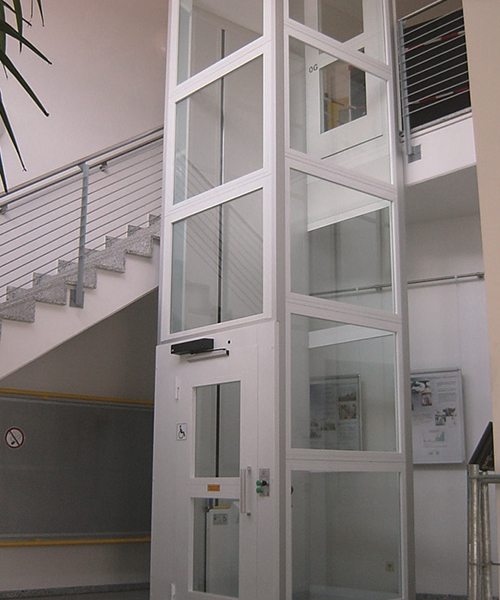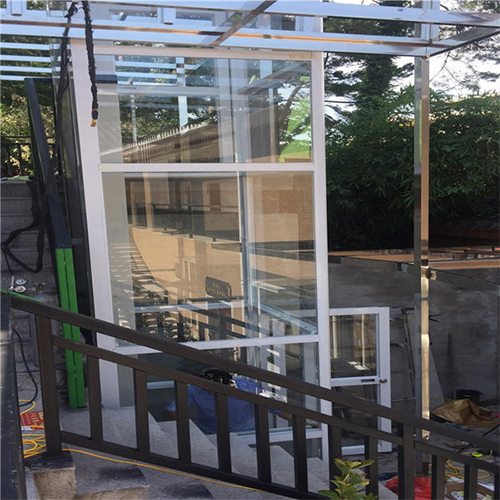
Hoistway vertical platform lifts (HVPLs) are dynamic accessibility solutions that redefine mobility in buildings, blending functionality with seamless integration to empower users of all abilities. Their “vivid” impact lies in transforming spaces—turning stairs and barriers into accessible pathways—while adapting to diverse architectural needs. From commercial buildings to residential homes and public facilities, these lifts serve as quiet heroes, enhancing independence without compromising on safety or design.
At their core, HVPLs are engineered for vertical transportation within a dedicated hoistway (a enclosed shaft or structure). Unlike traditional elevators, they feature a flat platform (instead of a cab) that accommodates wheelchairs, scooters, or users with mobility aids, along with companions if needed. The hoistway provides structural support and safety enclosure, protecting the lift mechanism and users from external hazards. Most HVPLs operate on either hydraulic or traction systems: hydraulic models use fluid pressure for smooth, quiet movement, ideal for low-to-medium rise applications (up to 6 floors), while traction systems rely on cables and counterweights, offering energy efficiency for taller buildings. Both designs prioritize stability, with precise controls that ensure level alignment at each floor.
Safety is a cornerstone of HVPL design, with multiple features engineered to protect users. Emergency stop buttons, non-slip platforms, and safety rails prevent accidents during operation, while door interlocks ensure the lift only moves when all doors are securely closed. Battery backup systems kick in during power outages, allowing the lift to reach the nearest floor safely. Many models also include overload sensors that halt operation if the platform exceeds weight limits, and obstruction sensors that detect objects in the lift’s path, stopping movement to avoid collisions. These features comply with strict industry standards (such as ANSI/ASME A18.1 or EN 81) to ensure reliability and legal compliance.
HVPLs are highly versatile, adapting to a range of settings and user needs. In commercial buildings—offices, retail stores, hotels, and healthcare facilities—they provide ADA-compliant accessibility, ensuring businesses meet accessibility regulations while welcoming all customers and employees. Residential HVPLs are compact and customizable, fitting into existing homes with minimal renovation; they can be installed indoors (in closets, stairwells, or unused spaces) or outdoors, serving single-family homes, townhouses, or multi-level apartments. Public facilities like schools, libraries, and government buildings rely on HVPLs to make services accessible to everyone, from students with disabilities to elderly visitors. Some specialized models are designed for heavy-duty use, accommodating larger wheelchairs or medical equipment in hospitals or rehabilitation centers.

Design flexibility is another key advantage of HVPLs. They come in various sizes, from compact platforms for narrow hoistways to wider models that accommodate multiple users. The hoistway can be customized with materials matching the building’s interior—wood, metal, glass, or drywall—ensuring the lift blends seamlessly with existing decor. Many HVPLs feature sleek, low-profile controls (wall-mounted or handheld) that are easy to operate, even for users with limited dexterity. For outdoor installations, weather-resistant materials protect the lift from rain, snow, and extreme temperatures, ensuring year-round functionality.
Installation and maintenance of HVPLs are designed to be user-friendly. Professional installation typically involves minimal structural modification, especially for residential models, with most systems fitting into standard doorways or existing shafts. Routine maintenance—such as checking hydraulic fluid levels, inspecting cables and sensors, and lubricating moving parts—ensures long-term performance and extends the lift’s lifespan. Many manufacturers offer maintenance guidelines, and certified technicians can provide regular service to keep the lift in compliance with safety standards.
When selecting an HVPL, several factors should be considered. The building’s height and available space determine the lift’s travel distance and platform size. Weight capacity needs to accommodate the intended users (e.g., standard wheelchairs vs. bariatric equipment). Power source and energy efficiency may influence the choice between hydraulic and traction systems. Aesthetic preferences and architectural constraints will guide hoistway design and material selection. It’s also important to verify compliance with local accessibility codes and industry standards to ensure legal compliance and user safety.
